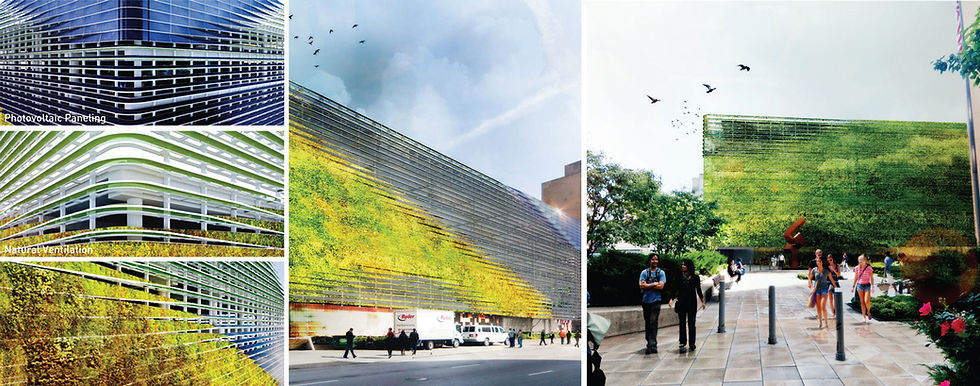Bringing Nature Home: Embracing Biophilic Design.
- VIQ

- May 20
- 3 min read
In our fast-paced, technology-driven world, it's easy to feel disconnected from the natural environment. Yet, there's a growing movement in architecture and design that's aiming to change that—biophilic design.

What Is Biophilic Design?
At its core, biophilic design is about re-establishing the bond between humans and nature within our built environments. It's not just about adding a few plants here and there; it's about thoughtfully integrating natural elements—like sunlight, greenery, water features, and organic materials—into the very fabric of our homes, workplaces, and public spaces.
This design philosophy recognizes that our well-being is deeply connected to the natural world. By bringing elements of nature indoors, we can create spaces that not only look beautiful but also promote health, productivity, and overall happiness.
The Benefits of Biophilic Design
Research underscores the profound impact of biophilic environments on human health and productivity:
Enhanced Well-Being: Exposure to natural elements has been linked to reduced stress levels, lower blood pressure, and improved mood.
Boosted Productivity: Workspaces enriched with natural light and greenery have shown increases in employee productivity and creativity.
Faster Healing: Patients in healthcare settings with access to natural views or elements often experience quicker recovery times.
Improved Air Quality: Incorporating plants and natural ventilation systems can enhance indoor air quality by filtering pollutants and increasing oxygen levels.
Environmental Sustainability: Biophilic design often involves the use of sustainable materials and energy-efficient systems, contributing to a reduced environmental footprint.
Real-World Applications Across Building Types
Biophilic design principles can be applied across various building types, each benefiting uniquely from nature-integrated elements:
Residential Spaces
In homes, biophilic design fosters a tranquil and rejuvenating environment. Incorporating elements like indoor plants, natural materials (wood, stone), and ample natural light can enhance comfort and well-being. Features such as green roofs, living walls, and water features like fountains or ponds can further strengthen the connection to nature.
Commercial and Office Buildings
Workspaces that integrate biophilic elements—such as large windows for natural light, indoor greenery, and natural materials—can boost employee productivity, creativity, and satisfaction. Open layouts that allow for visual connections to outdoor spaces, along with the use of natural textures and colors, contribute to a more engaging and health-promoting work environment.
Healthcare Facilities
Hospitals and clinics benefit from biophilic design through improved patient outcomes and staff well-being. Incorporating views of nature, healing gardens, and natural materials can reduce stress, lower blood pressure, and accelerate recovery times. Design elements that allow for natural light and ventilation further enhance the healing environment.
Educational Institutions
Schools and universities that embrace biophilic design can enhance learning experiences and student well-being. Classrooms with access to natural light, outdoor views, and natural materials have been shown to improve concentration, reduce stress, and increase academic performance. Incorporating outdoor learning spaces and green areas can further enrich the educational environment.
Hospitality and Retail Spaces
Hotels, restaurants, and retail spaces can create memorable and inviting experiences by integrating biophilic elements. Features like indoor gardens, water installations, and the use of natural materials can enhance aesthetic appeal, promote relaxation, and encourage longer stays, thereby positively impacting customer satisfaction and business success.
Strategies for Incorporating Biophilic Design
Implementing biophilic design involves thoughtful integration of various elements:
Natural Light: Maximize daylight through strategic window placement, skylights, and open layouts to enhance mood and reduce energy consumption.
Indoor Greenery: Introduce plants, green walls, or indoor gardens to improve air quality and provide visual connection to nature.
Natural Materials: Use wood, stone, and other organic materials to create tactile and visual connections to the natural world.
Water Features: Incorporate elements like fountains, aquariums, or reflecting pools to add calming auditory and visual stimuli.
Biomorphic Forms and Patterns: Integrate shapes and patterns that mimic natural forms to create a sense of harmony and balance.
Sensory Variability: Design spaces that engage multiple senses through varied textures, scents, and sounds associated with nature.
By thoughtfully applying these strategies, designers and architects can create environments that not only meet functional needs but also nurture the human spirit and promote sustainability.









Comments